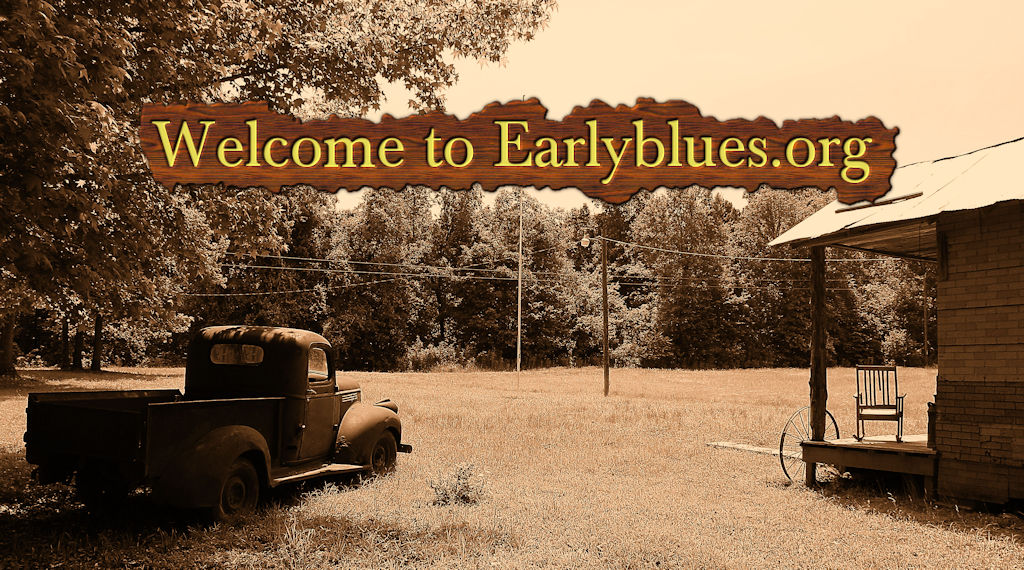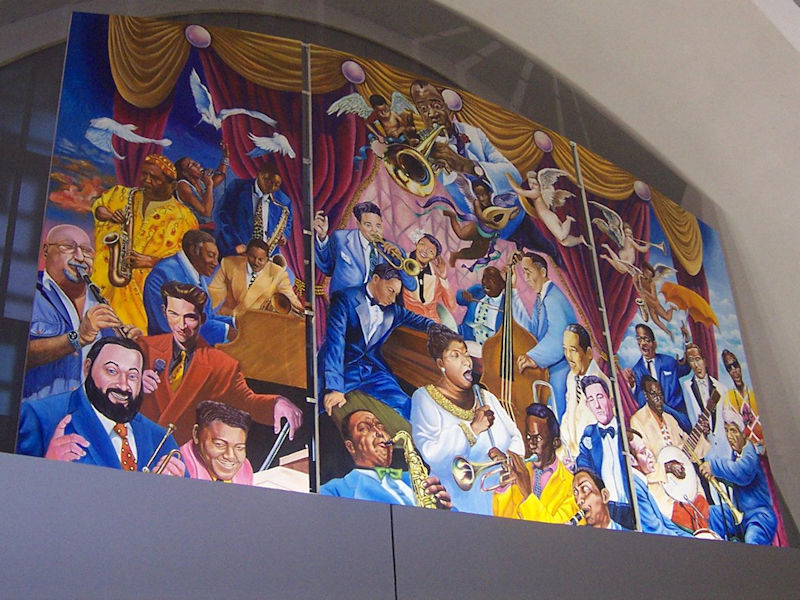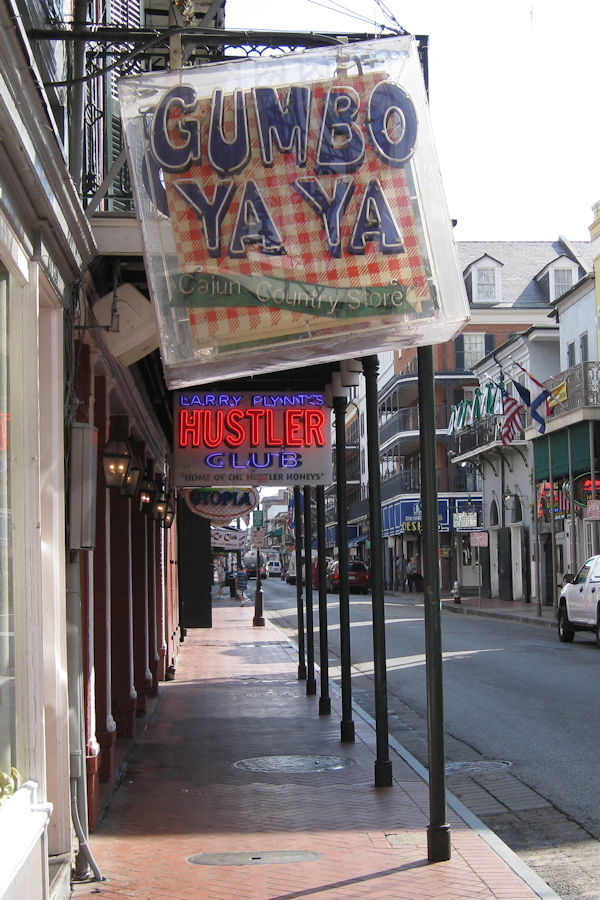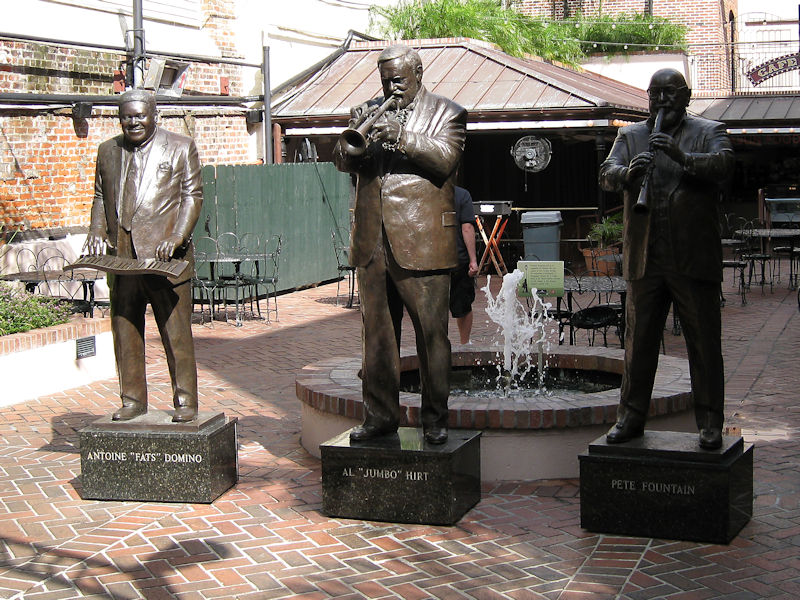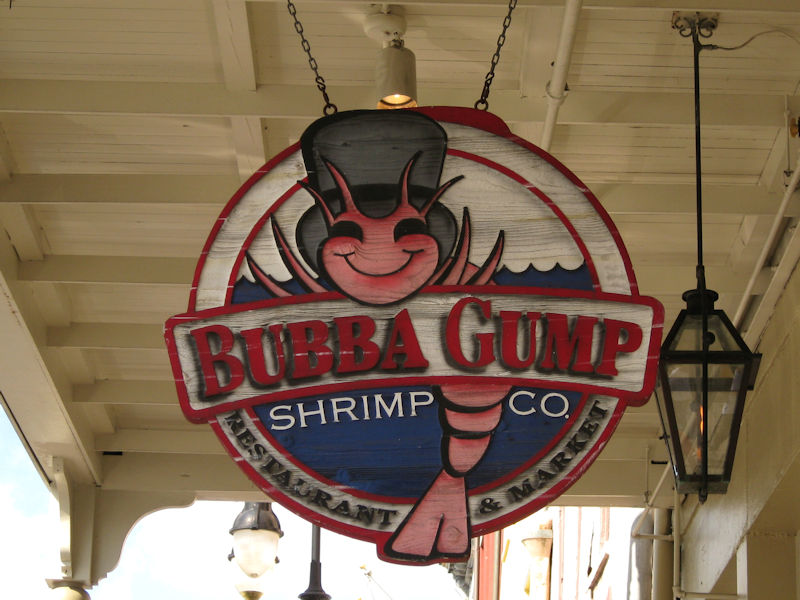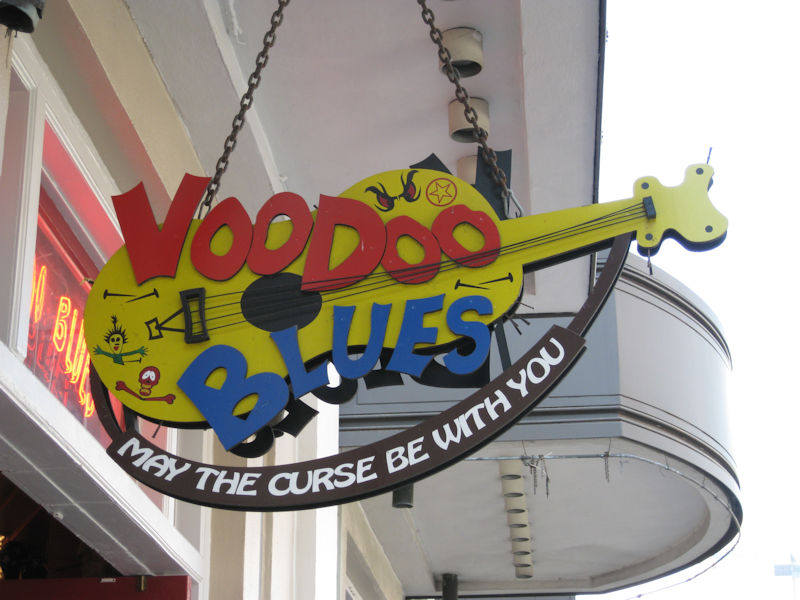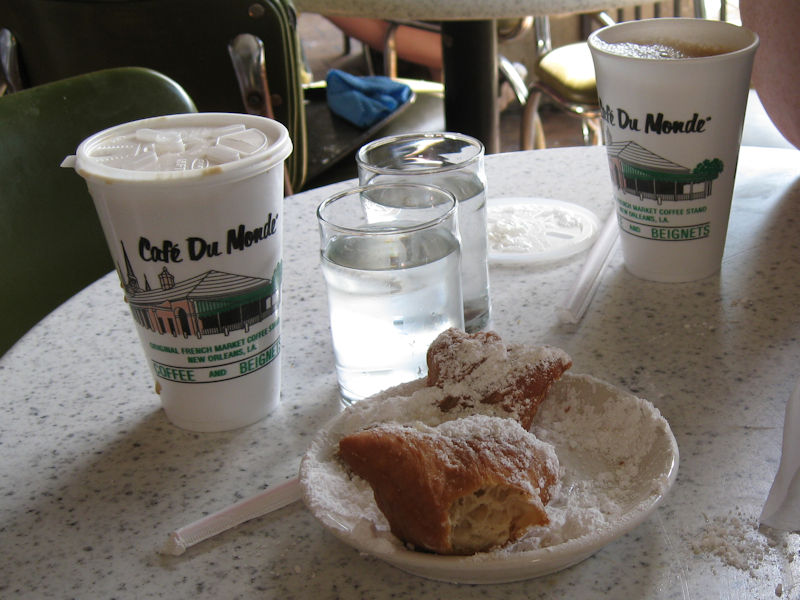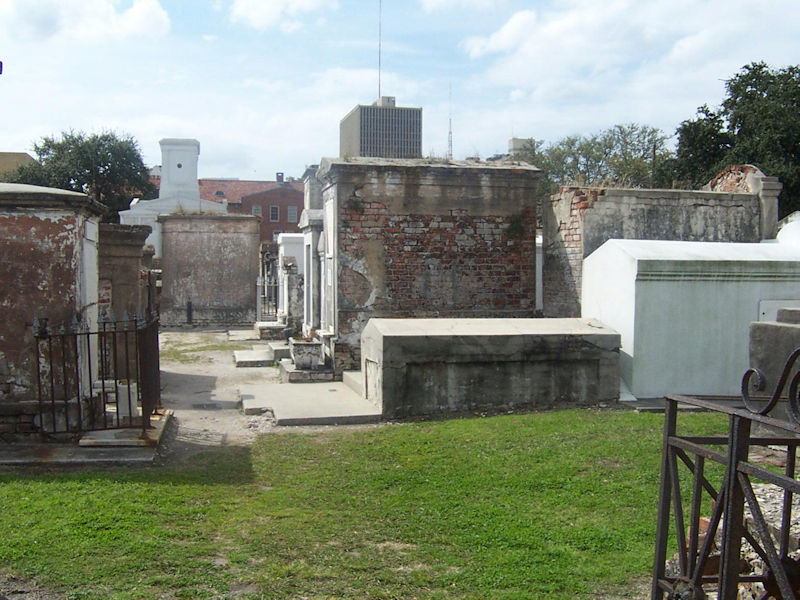Themed Photo Gallery and Information: New Orleans, Louisiana
Background
New Orleans is located along the Mississippi River in the southeastern region of the U.S. state of Louisiana. With an estimated population of 391,006 in 2018, it is the most populous city in Louisiana. Serving as a major port, New Orleans is considered an economic and commercial hub for the broader Gulf Coast region of the United States.
New Orleans is world-renowned for its distinct music, Creole cuisine, unique dialect, and its annual celebrations and festivals, most notably Mardi Gras. The historic heart of the city is the French Quarter, known for its French and Spanish Creole architecture and vibrant nightlife along Bourbon Street. The city has been described as the “most unique” in the United States, owing in large part to its cross-cultural and multilingual heritage. Founded in 1718 by French colonists, New Orleans was once the territorial capital of French Louisiana before being traded to the United States in the Louisiana Purchase of 1803. New Orleans in 1840 was the third-most populous city in the United States, and it was the largest city in the American South from the Antebellum era until after World War II. The city has historically been very vulnerable to flooding, due to such factors as high rainfall, low lying elevation, poor natural drainage and location next to multiple bodies of water. State and federal authorities have installed a complex system of levees and drainage pumps in an effort to protect the city.
New Orleans was severely affected by Hurricane Katrina in August 2005, which flooded more than 80% of the city, killed or displaced thousands of residents, causing a population decline of over 50%. Since Katrina, major redevelopment efforts have led to a rebound in the city’s population. Concerns about gentrification, new residents buying property in formerly closely knit communities, and displacement of longtime residents have been expressed.
The city and Orleans Parish (French: paroisse d’Orléans) are coterminous. As of 2017, Orleans Parish is the third most-populous parish in Louisiana, behind East Baton Rouge Parish and neighboring Jefferson Parish. The city and parish are bounded by St. Tammany Parish and Lake Pontchartrain to the north, St. Bernard Parish and Lake Borgne to the east, Plaquemines Parish to the south, and Jefferson Parish to the south and west.
The city anchors the larger New Orleans metropolitan area, which had an estimated population of 1,275,762 in 2017. It is the most populous metropolitan area in Louisiana and the 46th-most populous MSA in the United States.
Full history: https://en.wikipedia.org/wiki/History_of_New_Orleans
Professor Longhair
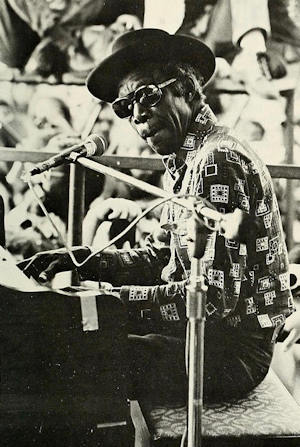 Henry Roeland “Roy” Byrd (December 19, 1918 – January 30, 1980), better known as Professor Longhair or “Fess” for short, was an American singer and pianist who performed New Orleans blues. He was active in two distinct periods, first in the heyday of early rhythm and blues and later in the resurgence of interest in traditional jazz after the founding of the New Orleans Jazz and Heritage Festival in 1970. His piano style has been described as “instantly recognizable, combining rumba, mambo, and calypso”.
Henry Roeland “Roy” Byrd (December 19, 1918 – January 30, 1980), better known as Professor Longhair or “Fess” for short, was an American singer and pianist who performed New Orleans blues. He was active in two distinct periods, first in the heyday of early rhythm and blues and later in the resurgence of interest in traditional jazz after the founding of the New Orleans Jazz and Heritage Festival in 1970. His piano style has been described as “instantly recognizable, combining rumba, mambo, and calypso”.
Music journalist Tony Russell (in his book The Blues: From Robert Johnson to Robert Cray) wrote that “The vivacious rhumba-rhythmed piano blues and choked singing typical of Fess were too weird to sell millions of records; he had to be content with siring musical offspring who were simple enough to manage that, like Fats Domino or Huey “Piano” Smith. But he is also acknowledged as a father figure by subtler players like Allen Toussaint and Dr. John.”
Byrd was born on December 19, 1918, in Bogalusa, Louisiana. His distinctive style of piano playing was influenced by learning to play on an instrument that was missing some keys. He left the city as a baby with his parents, who were most likely fleeing the racial tension surrounding the Bogalusa Massacre.
He began his career in New Orleans in 1948. Mike Tessitore, owner of the Caldonia Club, gave Longhair his stage name. Longhair first recorded in a band called the Shuffling Hungarians in 1949, creating four songs (including the first version of his signature song, “Mardi Gras in New Orleans”) for the Star Talent record label. Union problems curtailed their release, but Longhair’s next effort for Mercury Records the same year was a winner. Throughout the 1950s, he recorded for Atlantic Records, Federal Records and local labels. Professor Longhair had only one national commercial hit, “Bald Head”, in 1950, under the name Roy Byrd and His Blues Jumpers. He also recorded his favorites, “Tipitina” and “Go to the Mardi Gras”. He lacked crossover appeal among white and wide audiences. Yet, he is regarded (and was acknowledged) as being a musician who was highly influential for other prominent musicians, such as Fats Domino, Allen Toussaint and Dr. John.
After suffering a stroke, Professor Longhair recorded “No Buts – No Maybes” in 1957. He re-recorded “Go to the Mardi Gras” in 1959. He first recorded “Big Chief” with its composer, Earl King, in 1964.
In the 1960s, Professor Longhair’s career faltered. He became a janitor to support himself and fell into a gambling habit.
After a few years during which he disappeared from the music scene, Professor Longhair’s musical career finally received “a well-deserved renaissance” and wide recognition. He was invited to perform at the New Orleans Jazz and Heritage Festival in 1971 and at the Newport Jazz Festival and the Montreux Jazz Festival in 1973. His album The London Concert showcases work he did on a visit to the United Kingdom. That significant career resurrection saw the recording of the album “Professor Longhair – Live On The Queen Mary”, which was recorded on March 24, 1975, during a private party hosted by Paul McCartney and Linda McCartney on board the retired RMS Queen Mary.
By the 1980s his albums, such as Crawfish Fiesta on Alligator Records and New Orleans Piano on Atlantic Records, had become readily available across America. In 1974 he appeared on the PBS series Soundstage (with Dr. John, Earl King, and The Meters).
In 1980 he co-starred (with Tuts Washington and Allen Toussaint) in the film documentary Piano Players Rarely Ever Play Together which was produced and directed by filmmaker Stevenson Palfi. That documentary (which aired on public television in 1982 and was rarely seen since), plus a long interview with Fess (which was recorded two days before his sudden death), were included in the 2018 released project “Fess Up”.
Professor Longhair died in his sleep of a heart attack while the filming of the documentary was under way (and before the live concert, which was planned to be its climax). Footage from his funeral was included in the documentary.
Professor Longhair’s manager through those renaissance years of his career was Allison Miner, of which jazz producer George Wein was quoted saying: “Her devotion to Professor Longhair gave him the best years of his life.”
Professor Longhair was inducted into the Blues Hall of Fame in 1981. In 1987, he was awarded a posthumous Grammy Award for his early recordings released as House Party New Orleans Style. He was inducted into the Rock and Roll Hall of Fame in 1992.
Source: Wikipedia
Historical Markers
None.
Photo Gallery
Here are a selection of photos from a visit in 2008, three years after Hurricane Katrina. Our first visit was in 2002, three years before Hurricane Katrina. Photos from that trip were non-digital (remember those days!) and hence more cumbersome to add at this time – to be added later.
Louis Armstrong & his Heavenly All-Star Band
Located in the Central (Parabola) Lobby, south end at the Louis Armstrong International Airport (MSY), New Orleans, LA
In celebration of New Orleans’ musical ambassador Louis Armstrong, artist Richard Cornelius Thomas created a vibrant jazz mural, Louis Armstrong and his Heavenly All-Star Band, that is a tribute to the New Orleans musicians and their legendary colleagues who created jazz, shaped it, made it a living art form and are still a part of its evolving development.
The images on the mural, which measure 28 feet by 41 feet, are presented in a stage setting, as Armstrong gathers his ultimate ensemble players to perform in this great “Jam Session.” Thomas has subtitled the mural, What you Loose on Earth Shall Be Lossed in Heaven.
A couple of rare photos (above) taken early morning after the street cleaners and before the crowds!
Statues of Fats Domino, Al Hirt and Pete Fountain at the Musical Legends Park, located at 311 Bourbon Street in the French Quarter.
You can read all about it here.
Above, two interesting signs.
Couldn’t resist – beignets and coffee, yummy!!
Street musicians, not so many about after Katrina.
Saint Louis Cemetery just off the French Quarter showing above-ground vaults. This photo was taken before Katrina, not sure if it’s still intact.
More about Hurricane Katrina coming soon.
